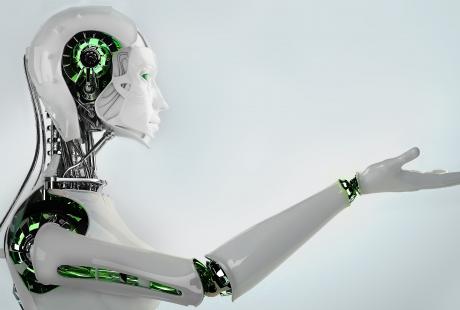Robotics has already been deployed in manufacturing to great effect for over a decade, performing delicate and precise tasks with greater accuracy than humans.
But now cutting-edge robots and other smart machines are set to join forces with the rapidly expanding Internet of Things, which Gartner estimates will total 25 billion devices by 2020.
In healthcare, robotic services are already operating pharmacy dispensers and robotic trolleys are now deployed in a growing number of hospitals. In hospitality, robots deliver services such as drinks dispensing and automated trolley deliveries.
Robots have even made their way into education, where they are being deployed successfully as a tutor, tool or peer in learning activities.
But what impact will this large-scale adoption of robotics have on existing networks as they encounter inevitable further strain?
>See also: How robots will transform your workplace
Meeting the demands of robotics
Robotics delivering essential services will create enormous demand for greater bandwidth, priority and on-demand connectivity.
Can businesses hope to benefit from and integrate this advanced automation with traditional IT infrastructure? Will their networks be capable of meeting demands for extensive bandwidth, consistent reliability and interoperability?
Each industry sector will have specific requirements for robotics adoption. In healthcare, for example, precision is a key requirement for robots deployed to assist with surgery. Yet in hospitality, there will be an emphasis on punctuality – delivering services or ordered items to the right place at the right time.
Without a strong and capable network as a backbone, individual smart devices will not flourish in the workplace, bottlenecked by capacity limitations. By introducing new network technology, the right infrastructure can be developed to support all of the above.
Getting sufficient bandwidth all the way to the network edge is a must to ensure time-sensitive tasks with little margin for error are uninterrupted.
This is where the network truly shows its worth – a network that is comprised of robust switches capable of withstanding heavy demand for bandwidth and connectivity will be best poised to adopt automation to maximum effect.
The most advanced generation of SDN-compatible switches incorporates features such as embedded network analytics and deep packet inspection.
These application and device aware switches will allow for data prioritisation and smart machines and robots to operate unhindered by bottlenecks.
But should network demand rise, the ability to prioritise network capacity for devices and applications carrying out business-critical tasks is an absolute must.
This network ‘fluency’ can be provided by enforcing prioritisation policies based on profiles of any user, device or application registered to the network – so those back-office workers streaming YouTube videos will never be able to hinder the performance of shop floor robotics.
Industrial-grade switches are also now available, capable of operating 24×7 at the network edge in challenging industrial conditions, and are a necessity in many of the differing workplace environments where robots will be deployed.
If a switch is not robust or is easily damaged, potentially millions of pounds worth of robotic automation could be rendered useless. These rugged switches can already be found operating in challenging environments ranging from underground tunnels to heavy industrial plants.
>See also: Humans vs robots: the battle for the workplace
Intelligence in the fabric
The challenges are twofold: physical and digital. By introducing intelligent fabric networking technology, enterprise networks will be able to dynamically adapt to the requirements of virtualised workloads and simplify network operations through comprehensive automation.
And intelligent fabric means intelligent deployment – robotic devices grouped together by policies for rapid integration and simpler provisioning.
Developments in cloud computing with the potential to harness converged infrastructure benefits, such as processing of complex data in the form of speech and facial recognition, are making the delivery of applications for robotics highly attractive.
Yet practical deployment of this advanced technology is made even more attractive by developments in switch technology providing high data transfer rates and improved interoperability.
Smart machines will be unable to operate effectively if they are hindered by an unintelligent network. Businesses must be able to deliver data in a timely, secure fashion without any interruption.
Sourced from Manish Sablok, head of field marketing, NWE, ALE







